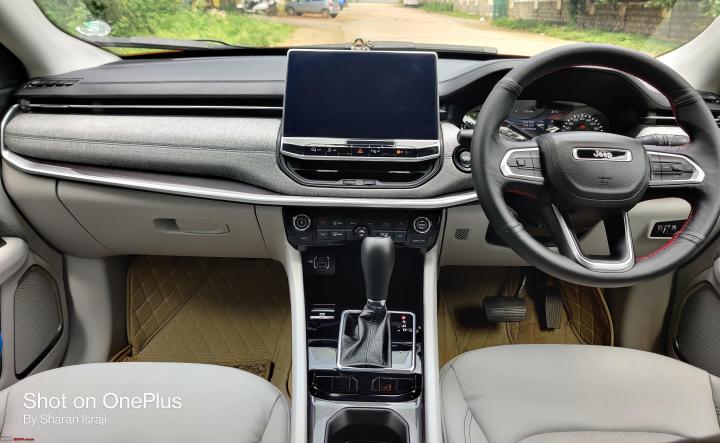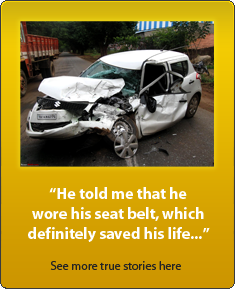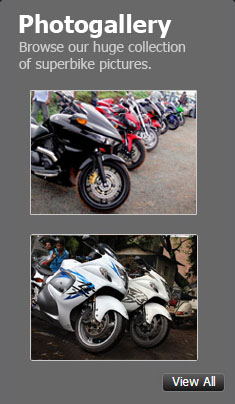News
My 2021 Jeep Compass Petrol AT: Ownership review
My 8-year-old Renault Duster had crossed 1 lakh km and thus, I was looking to purchase a new car, preferably an SUV or a compact SUV.
BHPian sharan_si recently shared this with other enthusiasts.
Likes
- Looks stunning, clean, and timeless design with no frills or quirkiness, will age well.
- 1.4 Multiair Petrol churns out 163 Bhp, plenty of power on tap, offers outright performance.
- Exceptional handling, sharp dynamics, strong brakes, and solid high-speed stability, Jeep Compass deserves a full 5 stars in this department.
- Solid build quality, strong chassis, built like a vault, follows the Jeep's legacy. Definitely a safe car.
- 7 Speed DCT is smooth and offers a comfortable city drive.
- New re-designed interior layout is clean, feels premium, quality stuff inside out.
- Well-tuned suspension and EPS, steering is light in the city and weighs up well, and is accurate at high speeds.
- Plenty of safety features (ESP, Electronic Roll mitigation, Traction control, Rain Brake Support and many more).
- Respectable highway mileage.
Dislikes
- 1.4 Multiair isn’t as frugal and powerful as 2.0 Multi-jet Diesel, guzzles fuel if pushed hard unlike 2.0 diesel, which offers consistent mileage.
- Compact size, less spacious in the segment.
- Missing features (No ADAS, blind spot monitor, etc.), looks bare minimal compared to XUV 7OO and MG.
- Small dealership and service network, most of the tier-2 cities don’t have service stations.
- 7 Speed DCT isn’t as fast and intelligent as 7 Speed DSG from VW.
- Premium pricing, it should be a couple of lakhs cheaper than the current price.
- Few niggles and issues reported by existing customers.
- Confusing variants, no 4x2 Diesel AT, no cruise control in MT, only 2 Airbags in mid variant.
The new car
Our Duster crossed the 1 Lakh km and was doing good, I wanted Automatic for quite some time, Spinny offered a very good deal for the Duster (around 45% of purchase value after 8+ years ), we sold the Duster and started the hunt for a new car.
The requirement
- Compact SUV/SUV, 4/5 star safety rating. It has to be Automatic and has to be either TC or DCT. A big NO for CVT.
- DCT/DSG – Fast and Efficient. Will not miss Manual Gearbox but not reliable as the other 2 ATs.
- Torque Converter – Most reliable and practical AT.
- CVT – No fun to drive, very slow shifts.
Cars considered
Harrier Diesel AT, Seltos Diesel AT, MG Hector, VW Taigun 1.5 DSG, XUV 700, VW T-Roc and the Jeep Compass.
Harrier Diesel AT
Combination of Fiat’s 2 Litre Multijet with 6 Speed TC from the Hyundai is really good, much better than I expected it to be, it is value for money with a lot of features and plenty of space inside, I found the steering to be very heavy and cumbersome for city use, and not well-tuned for highway either. Also, I am not very confident about the long-term reliability of the car, so dropped this option.
Seltos Diesel AT
Combination of 1.5 Diesel with 6 Speed TC is deadly, the best Torque converter-Diesel combo option out there in the segment, I would have bought this but felt it’s too expensive for a car in that segment (Around 4.5 Lakh more for AT over manual), also 3-star safety rating is disappointing, expected at least 4-star. With the 17 and 18-inch wheel option available in AT, the suspension is too stiff and difficult to manage (I was able to manage this with the 16-inch wheel in my Seltos) for city ride.
MG Hector
Lot of space inside with many features, it also gets same 2.0 Diesel from Fiat as Harrier and Jeep, but there is no Diesel AT on offer, Petrol Automatic is not impressive, suspension is too soft, gives the feel of floating at high speed, overall it’s not a car for the enthusiasts.
VW Taigun
Test drove 1.5 DSG, 1.5 TSI is very powerful and 7 Speed DSG is lightning quick, its shift the gear in no time, it’s truly a performance car, with active cylinder technology it offers good mileage too. But space is too less, feels like bigger Polo, the rear seat is strictly for 2 adults, and a lot of cost-cutting done with localization, noise insulation is poor, I could hear a lot of road noise during the test drive, quality of plastic used in the interior doesn’t belong to the price segment.
XUV 7OO
Hot SUV in the market, I just didn’t consider since its freshly baked product from Mahindra, reliability is unknown. After knowing the number of issues and niggles reported when XUV 500 was launched, it's not confidence-inspiring.
VW T-Roc
No doubt it’s a good car and closest to Jeep in many aspects and better in a few areas, the only concern I had is it’s a CBU, getting parts will be difficult and time-consuming in case of major repair, well VW’s DQ200 is notorious for breakdowns.


Buying experience
Bought it from KHT Prime, Bangalore. Overall buying experience was smooth, I took around 3 months before booking the car, most of the time dealt with the Sales Manager and branch head both were friendly (otherwise FCA's image is not great in handling customer) and technically good answered most of the queries, they gave all the details and more test drives then I asked for, in fact when I complained about diesel clutch being too hard, they serviced the vehicle and got again for TD. I just test drove diesel MT just to compare with petrol AT, as AT was the requirement, 9 speed TC in Diesel AT not impressive, it gives the feel that engine is not powerful and need to pay a hefty premium over diesel manual, Test drove Petrol AT around 5-6 times to test performance and mileage. Both performance and mileage were satisfactory, I chose Longitude Petrol AT, Limited AT has a few more features (Sunroof, leather seats etc) but all the safety and required features are present in Longitude and I generally avoid the sunroof and other cosmetic features. After booking, they informed me when the car was available and I did PDI, found no issue in the car gave the go-ahead for registration, I wasn't able to get a waiver for the handling charge but they reduced it by a good amount, I got insurance and accessories outside.

Exterior
Facelift model with slight changes to the front design.

Classy 7-slot grill design.

Radiator grill.

Side profile with chrome line above the window.

Rear.
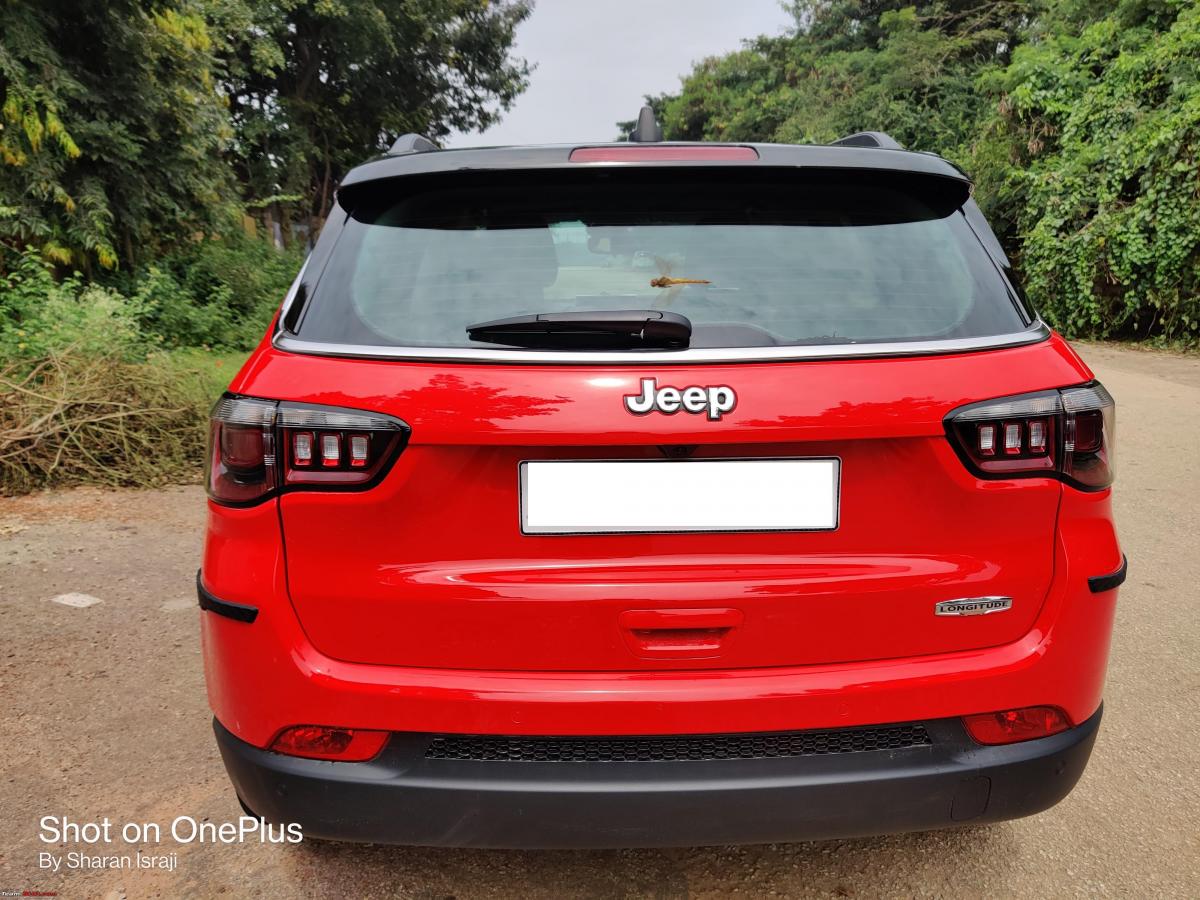
LED headlight with DRL.

JEEP Performance LED written inside.

Indicator on the rearview mirror.

Engine bay.

Frame
A strong unibody structure engineered with 70% hot-stamped steel (ultra high strength steel). 20+ parts are built using ultra high strength steel.

Diagonal hot-stamped steel at the bottom of the door to protect from side impact.
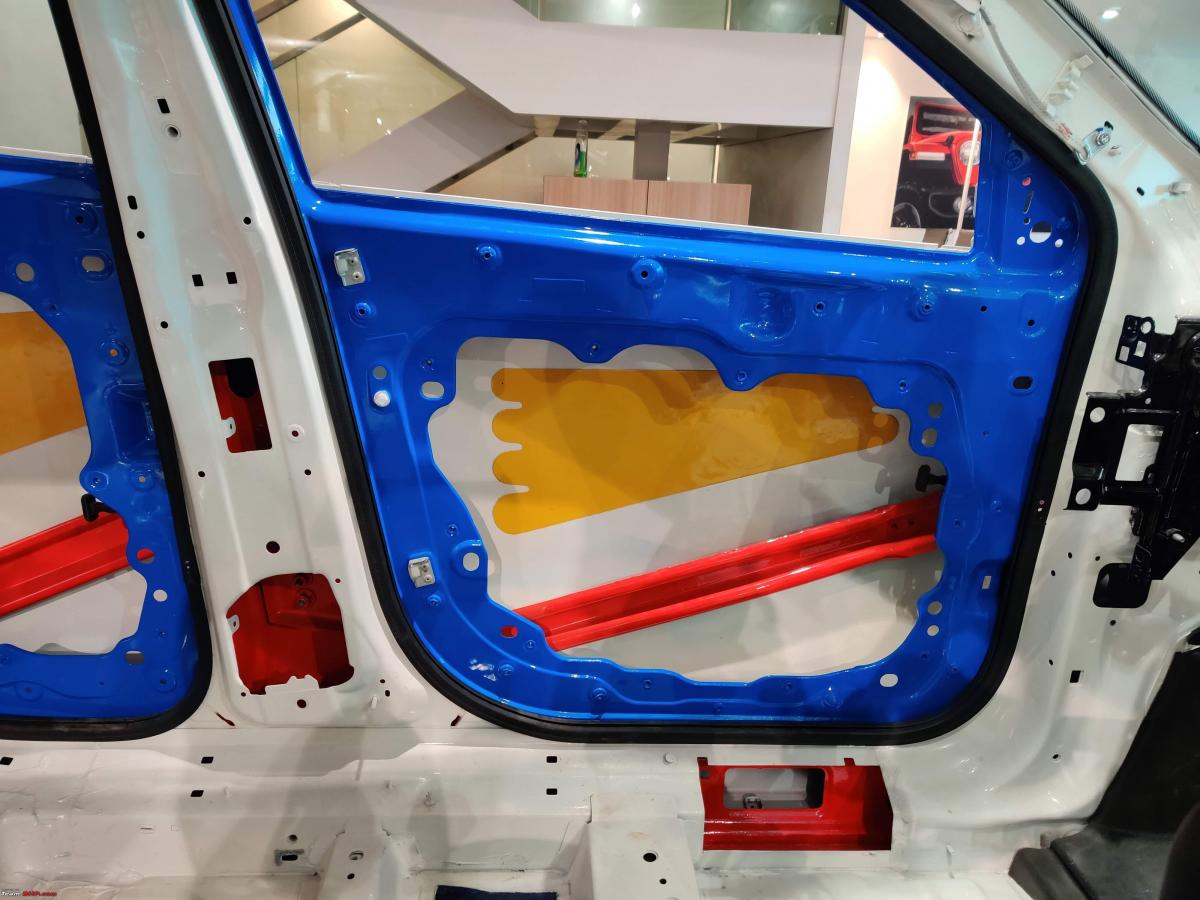
On the rear side.

1.4 MultiAir Turbo

Developed by Fiat Powertrain Technologies, Multi air technology dynamically controls the air intake cylinder by cylinder, stroke by stroke. A high-pressure oil chamber between the camshaft and intake value is managed by a solenoid valve connected to the electronic control unit. VVT/VVL too does the same but it controls mechanically, based on the selection of profile on the camshaft, so MultiAir offers precise control over the opening and duration of the airflow.
MultiAir can be fitted into existing engines, so 1.4 MultiAir is an improvement over the 1.4 T-Jet that’s found in FCA’s Abarth series.
Multiple strategies are used to optimize combustion efficiency, obtain optimal power, torque, Fuel Efficiency, and control the emission.
Operation modes
Full Lift mode: Valves are fully opened, allowing maximum air-fuel mixture, used when full power is required, mostly when driving on highways.
LIVO: Late intake Valve opening used at engine startup and idling.
EIVC: At medium-low rpm torques and engine partial loads, early intake valve closing optimizes volume efficiency and reduces pumping losses, undesired backflow into the manifold is avoided.
Multi-Lift: Used at low loads, city driving, stop and go mode allows optimization of combustion control. Valves opened multiple times within a stroke.
Driving the 1.4 MultiAir Turbo
1.4 MultiAir makes 163 hp @5500 rpm, 250 Nm @2500-4000 rpm.
With the brakes depressed, push the start button, engine comes to life with the slight hint of shake felt in the cabin. Engine idles at around 900 rpm, a small amount of engine noise is heard inside but it’s very low, noise insulation is very good if you open the window you hear the engine sound.
City Driving
As soon as you move the Gear out of P mode, you hear the sound of parking brakes getting automatically disengaged (only if seat belts are fastened) and it notifies the same on MID. Release the brakes car crawls at 7 kmph without the need of throttle input, it’s useful in the bumper-to-bumper traffic. Push the accelerator DCT shifts to 2nd gear somewhere after 12kmph, 1st gear ratio is extremely low, just used to move the car from a standstill. With light to moderate input to accelerator DCT shifts gear to 3rd at 25 kmph, 4 at 39 kmph, and 5 at 50-55 kmph, all these gear shifts happen around 2000 rpm, with DCT in D mode it doesn’t show the current gear in MID, need to shift to M mode to check the gear engaged. You can hardly notice the gear shifts unless you carefully observe it or look at the rpm meter, at times with full 5 adults and kids, you can notice the gear shifts (only the first 3 gears, remaining shifts are unnoticed). Overall gear shifts are smooth and effortless. In city DCT will be driving in 2/3 gears at times shift to 4 gear, upshift happen quickly as soon as to climb the speedometer, but at times it holds on the gear before downshifting when you are slowing down, I have observed DCT trying to move in 2nd gear below 10 kmph on an incline (half clutch), I had to shift to M mode and shift to 1st gear.
Most of the time with light input to the gas pedal, shifts happen around 2k rpms, at higher (3 and above) gears RPM falls below or around 1500rpm, there is a huge lag at this rpm, the engine feels numb and struggles to pull, on other hands if you push bit, DCT shifts gear around 2300-2500 rpm, and rpm falls around 2k after shifts, the engine has good power in this range.
DCT works best when it’s unhurried, it solves the purpose of automatic transmission in bumper-to-bumper traffic.
At times when you lift the foot from the accelerator and gradually slow down the DCT downshifts when you hit the accelerator again, it doesn’t upshift immediately, it unnecessarily revs till 2500 or above rpm range and shifts up, this happens even with a light foot.
If you apply brakes suddenly when you are moving at 40+ gearbox judders, it should be avoided in DCT, I switch to Neutral when I see I have braked fast and stop.
When you vary the speed quickly DCT gets confused and hunts a couple of seconds for the right gear before settling down onto the right gear.
Automatic start-stop system
This is quite useful for city drive as we end up waiting at signals or stuck traffic for long, as per a few experiments 1.5 liter NA engine will take as much fuel to start the engine as much it would consume during idling for 10 sec, so if you are stopping for more than 15 sec, it’s better to keep this feature on, well manual says to use this feature if you are stopping for more than 30 sec. There is a switch to control this feature below the touch screen.
When you come to a complete stop engine shuts off automatically, you need to keep the brake depressed, it starts the engine as soon as you lift the foot from the brake.
This feature won’t work for the below conditions.
- If you were crawling below 7 kmph from the last stop and come to a complete stop.
- If you are traveling uphill.
- Seatbelt is not fastened.
- The AC is in MAX AC mode.
It re-starts the engine within a few seconds if Auto AC is on and the desired temperature is not achieved by the climate control system or it is in the manual AC mode and fan speed is set to 6 or 7 speed.
Driving on highway
1.4 MultiAir comes to life on the highway, 163 Bhp on tap offers fast performance, DCT which feels underperformer in the city works quite well at high speed, the midrange is punchy, overtaking is effortless. You will mostly be on 5 to 7 gears on highways, it shifts to 7th gear around 88 to 95. The engine will be just under 2k rpm at 100 kmph, it is smooth and effortless to do 100, you can do 3 digit speeds all day without straining the engine, 120 comes around 2300 rpm, which is just below the peak torque rpm range. Push the gas pedal when the engine is in peak toque range, punchy midrange induces slight torque steer, especially on uneven roads, so you need to hold the steering firmly.
For quick overtaking, floor the gas pedal, it takes a second or 2 before reacting, DCT shifts gear down by 1 or 2, tachometer climbs all the way till 5500rpm + before shifting up, the car zooms through, mid-range is punchy and the engine pulls like the locomotive.
Stability of car at high speed is exceptional, be it pushing through the curves on highway or undulation of the roads (small bumps at bridges), it hardly unsettles or gets wavy, body roll is minimal to non-existent. Level of grip it offers is phenomenal. All 4-disc brakes work well, it comes to stop from 3-digit speed without a fuss. Apply breaks in emergency situations, army of electronic aids comes to support (Electronic Roll mitigation, ESP, Rain brake support), so breaking or manoeuvring in an emergency situation should be safer.
When you climb the hill, in D mode DCT shifts up before you would want it to, so putting in M mode is better. Climbing down is not a problem DCT holds on to gear till 3000+ rpm before up shifting, so you can make use of engine braking.
Driving in Manual mode
Shift the gear lever to Left from D mode to switch to M mode, the forward push will downshift and backwards will upshift, I feel other way is better initially few times I pushed back for down-shifts figured out it upshifts with this. Downshifts happen instantaneously in M mode, there is a small delay in upshifting, at low rpm (around or below 1800, depending on the gear and speed), DCT doesn’t allow upshifts to avoid engine lugging, at higher rpms (past 3500) it doesn’t allow the downshifts to avoid possible damage to the gearbox. Floor the gas pedal tachometer climbs till 6.5K rpm and stays there, the engine is free-revving, Engine gets louder and boomy at higher rpms.
Ride quality
Compass uses McPherson Strut with Lower Control Arm on the front and Multi-Link Suspension with Strut Assembly on the rear with FSDs. Overall suspension setup is slightly on the stiffer side, at city speeds it works well over the humps and small potholes, stiffness is felt over broken roads the large potholes. It’s definitely not very stiff, but not in Duster’s league either, you will notice the kind of road you are driving on. At high speed, the ride is comfortable, when you move over the uneven surface, small undulations on the road or move over the joints on the flyovers, all these are well filtered out. There is no body roll, it’s minimal to non-existent, even on corners/curves.
Mileage
City
With very few offices open, in light traffic with very few bumper-bumper traffic, I was able to get 10+ kmpl in the city (Bangalore), it’s possible with a light foot and driving below 2200 rpm with no sudden acceleration or breaking. With moderate to high traffic with jams, it’s 7-9 km/l.
Highway
With Lightfoot and not crossing 100 kmph, and driving within 70 to 100 kmph, I was able to get 16.3 kmpl over a distance of 140km, initially, it started with 19 kmpl, with few overtakes and driving at 100 for some time it settled down to 16.3. I feel this is a good mileage, considering it’s a heavy car with a petrol engine.
If you accelerate quickly, vary the speeds fast, and with too many overtakes, it will give around 11-14 kmpl. Turbo petrols are sensitive to acceleration, need to be driven sedately to extract good mileage.
With cruise control set to 90 kmph, I found FE dropping as it was always trying to maintain the speed, even on inclines and tries to reach target speed very fast say from 60 to 90 when you resume the cruise control after braking. So, I am getting better mileage without cruise control.
Interior
Open the door with a key in the pocket (passive entry), get into the car, shut the door, the door closes with 3 stage action, you will hear the loud thud, re-assuring the safety. Front cabin space is good, seats provide good under-thigh support they aren't cushiony like the one in Seltos Top-end (ventilated), you don't get the adjustable lumbar support in Longitude, steering is tilt & telescopic adjustable, there is no leather wrapping on the steering wheel. A-pillar isn't too thick and doesn't block the view while turning. Interior is made with good quality plastic with a lot of soft-touch material, the fabric is used on the dashboard (Limited gets leather upholstery). Armrest gets the vinyl cushioning, it's extendable, the fabric cushioning provided on all the doors.
New interior layout, with a soft touch and high-quality material.

From the driver seat, the steering leather wrap is done aftermarket.

Cruise control.

MID controls with call/voice command switch.

Engine Start/Stop button.
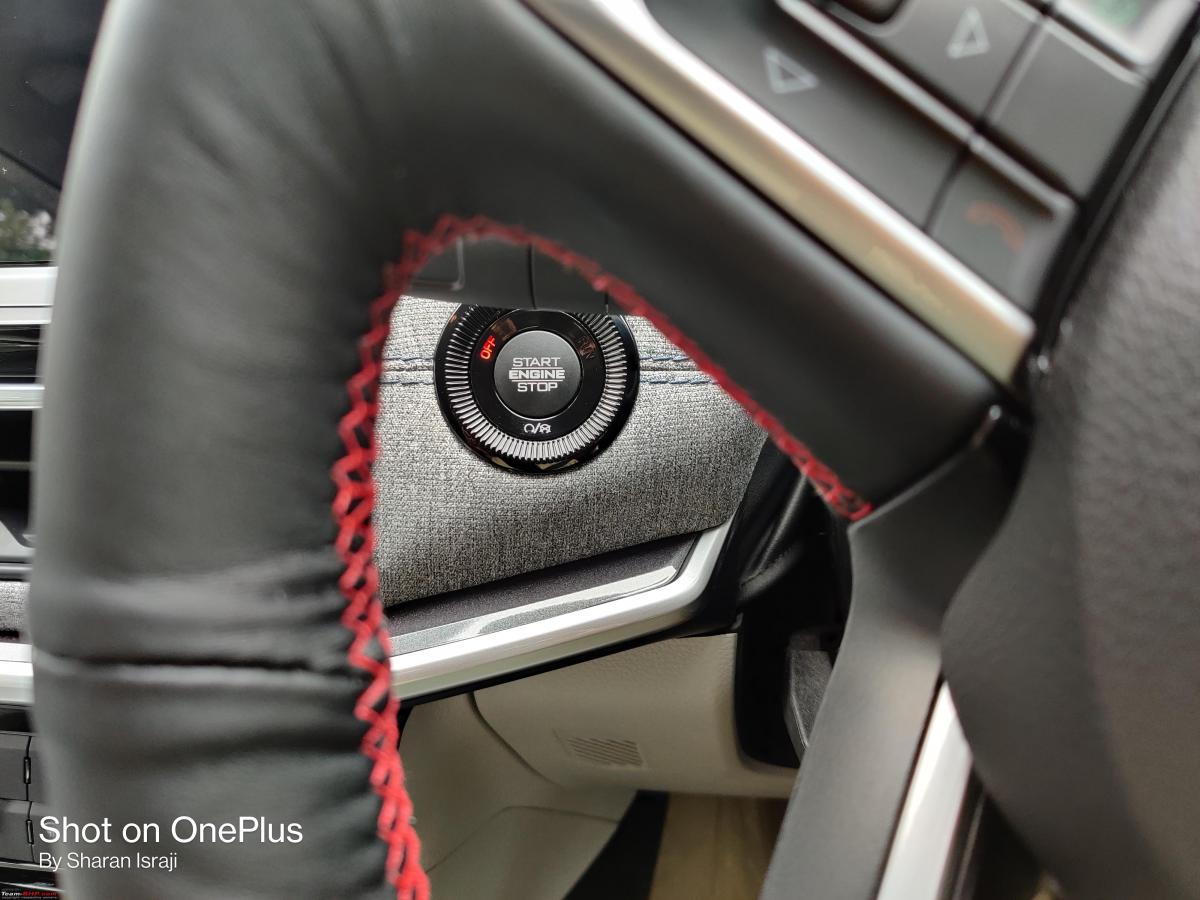
Exterior Mirror and window controls - Front windows are auto up/down, rear ones are auto down only. Tested if the front window has anti-pinch in test drive car with pen, it broke the pen before rolling down automatically, so be careful.
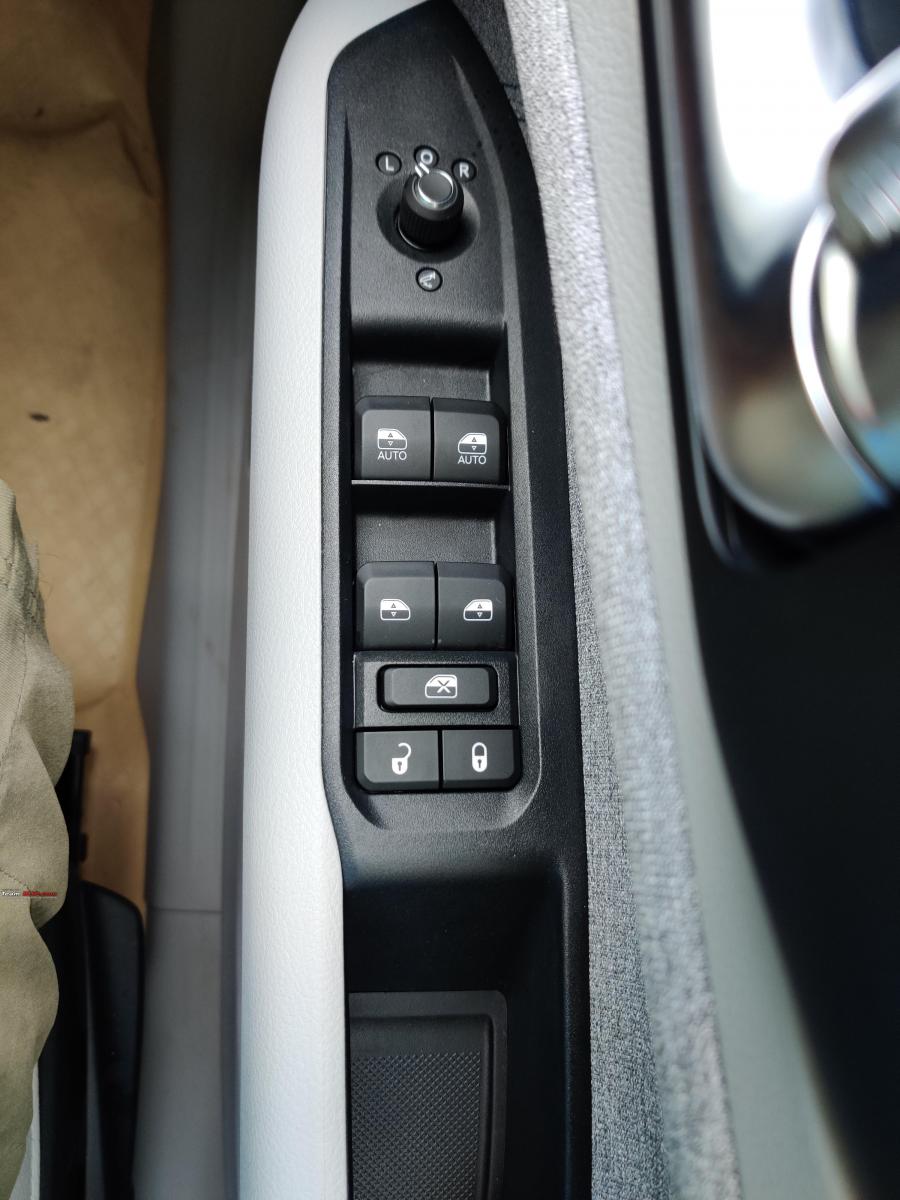
Fabric and AC vents on driver-side.

AC vents, sleek design. Slider and direction controls are made up of premium material.

Door handle with silver accent.
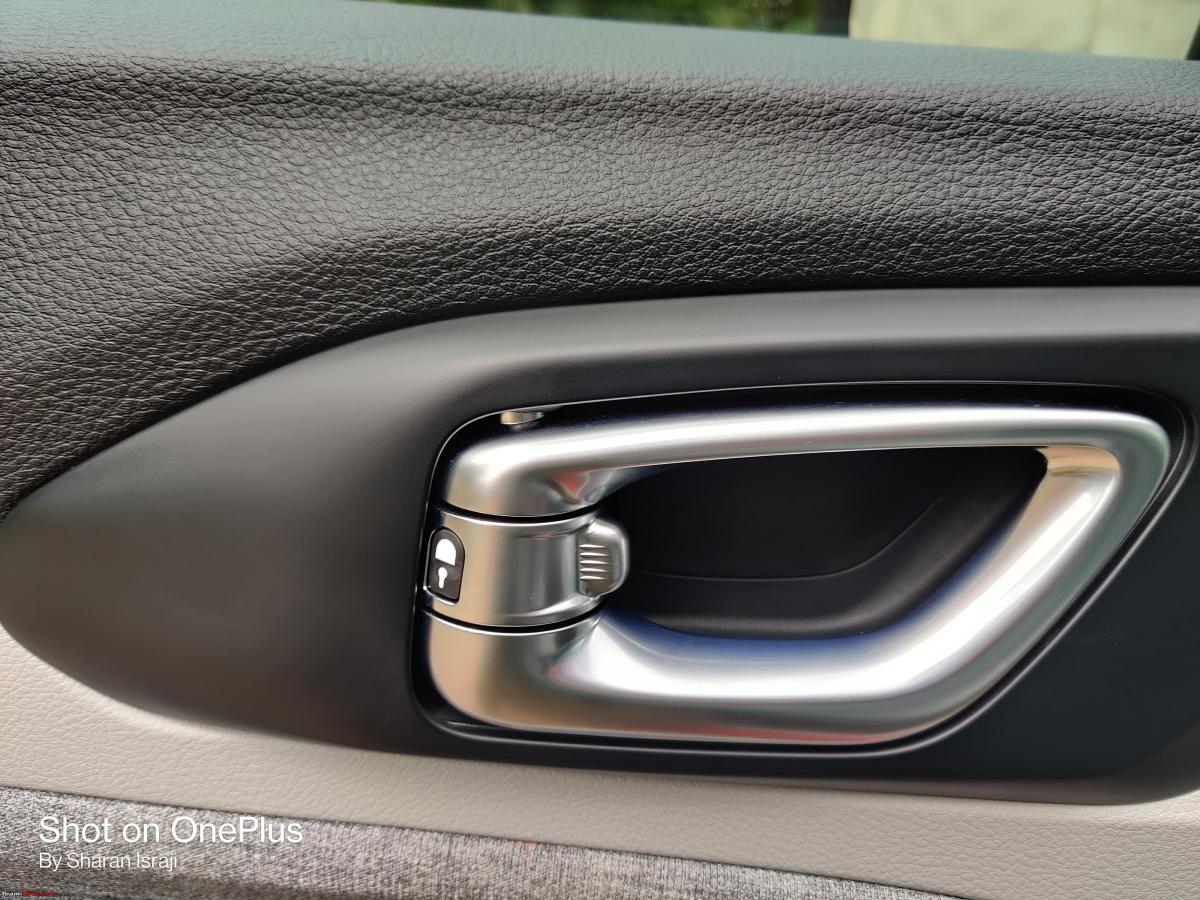
View from the passenger side.

Glovebox.
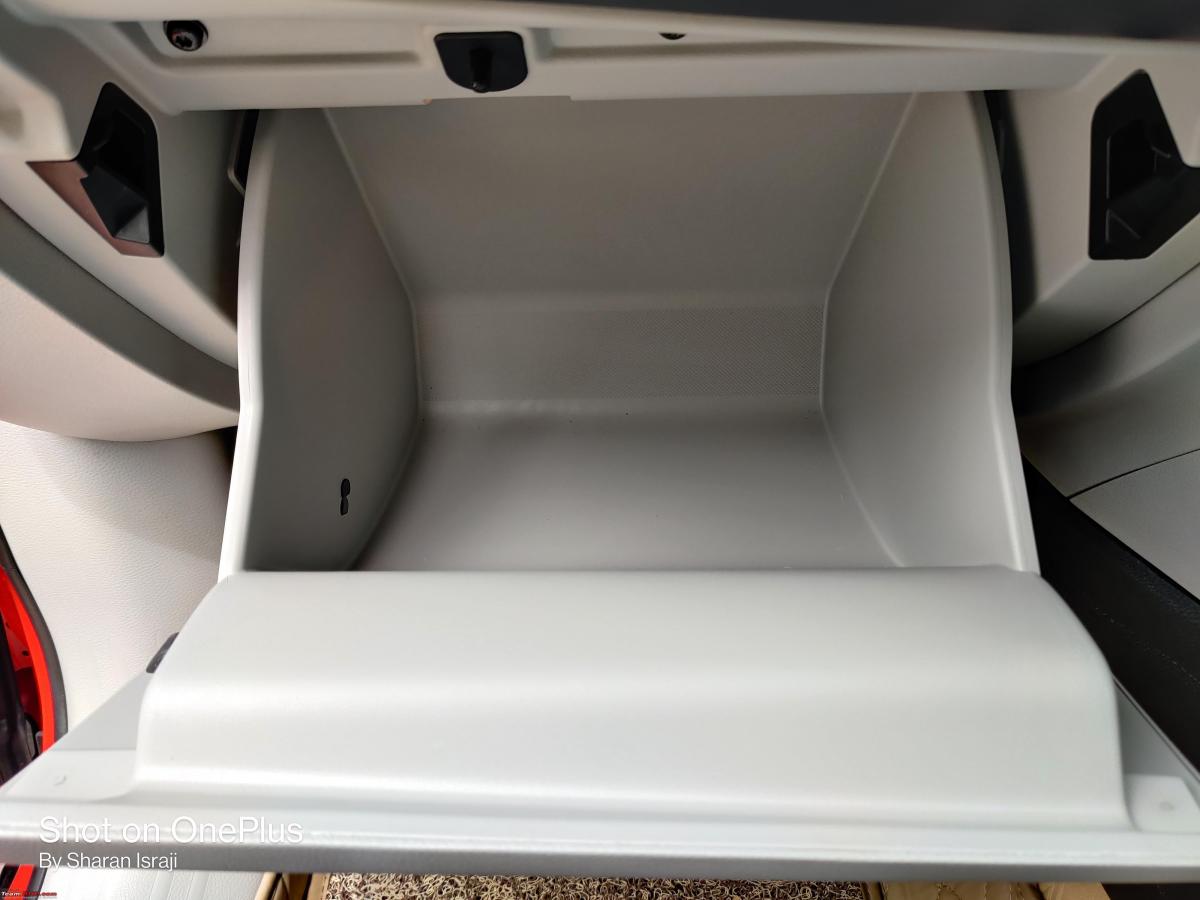
Few points
- Gear lever gets the push button, needed to move out or into the Parking, Reverse and Neutral, Push button not required for moves between the N, D and Manual.
- Pressing the push button start without the depressing brakes doesn't start the engine, but it shows ignition on and all the electronics become functional (touch screen, AC etc.)
- Move the gear lever without the engine on, warning starts flashing after some delay in both MID and led on the side on gear lever starts to blink.
- A dedicated switch is present below the touch screen to toggle Auto start/stop function, Traction control and parking sensor buzzer on/off.
- Volume control and track switches are present below the steering wheel.
- AC can be switched off by pressing the OFF switch on the control panel. It can be turned on in multiple ways, pressing AC switch/Auto AC switch/ from touch screen/pressing temperature switch on the panel.
- Auto cornering lights work when you turn, it works without having to turn on the indicator (use full on curves, where indicator is not switched on). It's well lit too.
- It has LED headlamps, color temperature is bright white (would have loved if it was yellow), found adequate at night, there is no need for an upgrade, they are good.
- Wipers sweep across the windshield, covers most of the area, they are not rain-sensing.
- Rear water jet is well hidden under the spoiler.
Continue reading sharan_si's ownership experience for BHPian comments, insights and more information.
- Tags:
- Indian
- Member Content
- Jeep Compass






